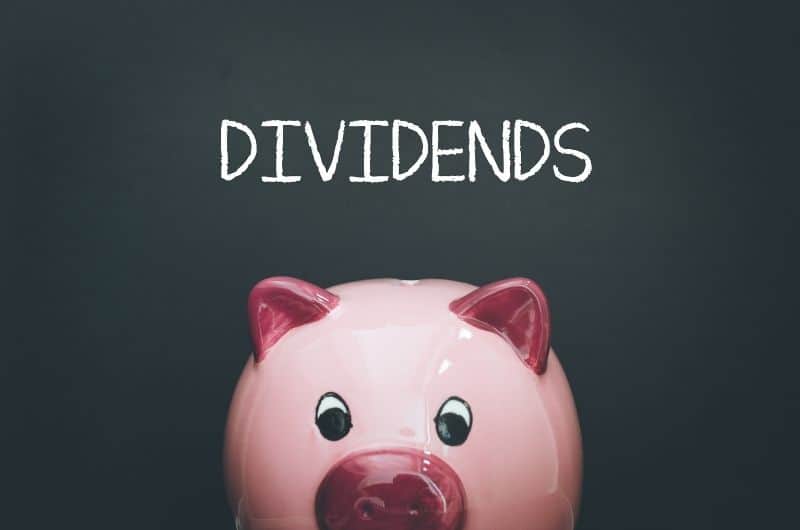Mutual funds fall under different fund types and classes, but two key classifications or categories you will find are Growth Funds and Dividend Funds. Understanding the difference between growth and dividend styles is essential in establishing an ideal investment plan for you. Combining different kinds of investments may also help you build a diversified portfolio.
When choosing a mutual fund, you are confronted with numerous choices. One of the more vexing decisions is selecting a fund having a growth alternative and a fund using a dividend reinvestment option. Every kind of fund has its benefits and drawbacks, and deciding that’s a much better match will be dependent on your unique requirements and situation as an investor.
There are lots of misconceptions about these choices among lay investors. A few believe the growth alternative is better from the discussion of expansion versus dividend, while some believe that, dividend option is greater. One choice isn’t always better than another.
Trying to choose between growth and dividend fund is like choosing who’s better between Superman and Batman. Successful investors understand what they’re buying and why they’re doing this.
Here is what to know in regards to growth funds versus dividend funds.
Mutual Funds With Growth In Mind

Growth funds are funds that hold stocks, which are stocks of companies expected to grow faster in relation to the total stock exchange. Growth stocks could be considered competitive investments since they often have comparatively high risks, together with relatively higher performance than the broader market indices.
Growth mutual funds buy and hold growth stocks. If, as an investor, you are trying to grow your investment over time, then a growth mutual fund is a superb tool to achieve this investment objective.
These mutual fund managers invest in companies with excellent potential for future earnings over and beyond the total marketplace. However, their cost valuations seem expensive in comparison to the rest of the market. This expansion expectation can be greater than the present cost and earnings imply.
Technology stocks, for example, Apple (AAPL) and Facebook (FB), are great examples of what growth mutual fund managers buy because of their portfolios. But growth funds don’t all buy large, large-cap stocks such as these. They also purchase small- and – mid-cap growth stocks of companies you might not have heard of but might be the next major growth firm.
Growth funds pay little if any dividends, or so the investor’s yield is accomplished via the purchase price appreciation of their underlying investment. By comparison, the investor’s gain for value/income funds could blend price appreciation and return (dividends).
Growth funds often (although not necessarily ) have the term “growth” in their titles. Examples include Vanguard Growth Index (VIGAX) and Fidelity Growth Company (FDGRX).
Mutual Funds With Dividends As The Goal

The dividend reinvestment option is somewhat different. Dividends that could otherwise be paid out to you as an investor in the fund are used to buy more stocks in the fund. Again, money isn’t paid out to you when dividends are paid to the fund’s stocks. Instead, money is automatically employed by the fund’s managers to purchase more fund units on your behalf moved into your investor account.
This strategy increases the number of stocks you owned over the years and generally results from the accounts growing in value quicker than if dividends weren’t reinvested. Many investment businesses provide this service to investors for free.
You realize a capital gain when you sell off your units in the fund, which will likely be more fund units than your initial investment in the event of the dividend reinvestment option.
If you select a mutual fund with a dividend reinvestment option or a growth alternative, you’re choosing to sacrifice regular dividend payouts in favor of letting the fund use that cash to grow your holdings. Examples include Vanguard Value Index (VVIAX) and Fidelity Value (FDVLX).
Dividend Distribution Choice
As the investor, it’s up to you if you would rather get money reinvested or paid out. An exception for this could be in the event of individual retirement accounts (IRAs). Dividends in IRA accounts have to be reinvested by investors who haven’t yet attained retirement age. Therefore they don’t incur premature withdrawal penalties from the Internal Revenue Service (IRS).
Dividend Payouts
At a dividend payout situation, the mutual fund dividend distributions are paid out directly to you as a shareholder. If you choose this alternative, dividends are often paid into a cash account, transferred electronically into your bank account, or sent out by check. As is true for the dividend reinvestment option, you don’t incur any charges for getting their earnings paid in cash.
Opting to reinvest dividends or have them paid out doesn’t impact the taxation consequences of these dividends. From a tax standpoint, dividend distributions are handled identically in both circumstances.
Differences Between Growth And Dividend Mutual Fund – Tabular View
| Differences | Dividend Fund | Growth Fund |
| Profits booked by fund Manager | Distributed to Investors | Re-invested back into the scheme |
| Net Asset Value | Dividends paid are deducted from the NAV. So ex-dividend NAV is lower. | NAV will be higher because profits re-invested may earn profits (compounding) |
| Total Returns on Investment | Total returns will be lower compared to the growth option in the long term due to periodic payouts. | Total returns will usually be higher compared to the dividend option over a sufficiently long investment horizon. |
| Taxation | Taxed as per the income tax slab rate of the investor | Short term and long term capital gains tax applies to depend on when you redeem |
| Who should Invest | If you need regular cash-flows from your investment, then you can invest in the dividend option. | If you do not need regular cash-flows, invest in the growth option since your total returns may be higher. |
| Duration | Shorter time horizon as cash inflow is regular. | Longer time horizon as cash flow is only at the end of a period. |
| Cash flow availability | Cash inflow from the stock at periodic intervals | Cash inflow at redemption or sale only. |
| Expected returns | Dividend stocks offer consistent cash flow, which is potentially less risky than growth stock because the investor is getting money at regular intervals. | Growth stocks have the potential for higher returns for investors. Growth stocks are compatible with those investors who are not looking for instant cash flow and are looking to stay invested for a longer time. |
| Performance | They generally outperform growth stocks. | They generally underperform than dividend stocks. |
| Compounding opportunity | The investor losses on the compounding of the stock’s excess return as the money are withdrawn in dividends by the investor. | The excess profits get compounded and stay re-invested, which increases the investment value and is compounded every period. |
A shareholder can opt to bypass both the growth and dividend reinvestment alternatives and instead have the dividends paid outright; in this situation, the cash is paid out directly to the investor.
Conclusion
It is unlikely you will find a single mutual fund that checks all your expectations; that is the reason why there are so many out there with a lot of distinct choices. When buying a mutual fund, it is ideal to examine its particular features to avoid investing in a fund that will not suit your distinctive growth or cash payout conditions.
If you plan a short-term investment with lower risk, you may want to consider debt mutual funds. However, if you’re in the market for superior returns, short-term and high-risk equity mutual investment may be your best options. Make your choice of a mutual fund based on your investment objectives and needs.
What’s your decision going to be? I’m always here for comments and questions. Let’s talk.

